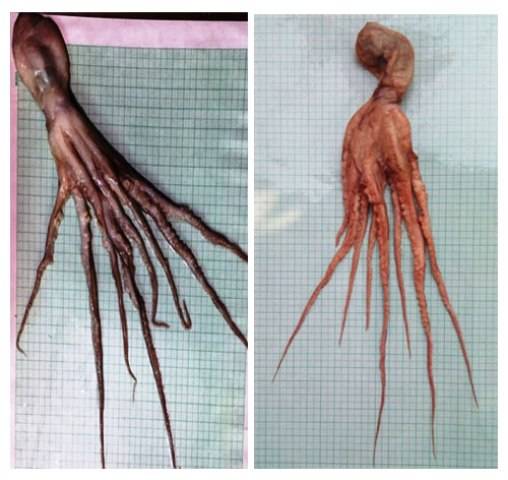
Everybody loves seafood, including people who are allergic to shellfish. But the question here is what are the best kinds of seafood?
Some great things about seafood include that they are mostly protein and that they are mostly in water, which means virtually no calories. You can eat 14 lbs. of shrimp and not gain a single human pound or kg. Also, many types of sea animals can be eaten grilled, boiled, or even raw, so it comes right to your plate looking like it just accidentally took a detour out of the sea and not disguised as something else. Eat it how it is, or just add a little lemon juice or butter if you want.
Octopus is full of several key nutrients, including trace minerals and vitamin B-12. Keep your serving of octopus healthy by opting for healthy low-fat cooking methods to avoid adding excess fat and calories. Octopus, like nearly all seafood, is lean and low in calories. A 3-ounce serving of octopus has less than 150 calories and more than 25 grams of protein.

Octopus contributed merely 0.72 % of the total molluscan resource (61688 t) landed in Gujarat during 2017. The species is mostly distributed in the Indo-Pacific region mainly Philippines, China, Bangladesh, India and Pakistan. Other important species of Octopus occur in the West coast of India are Octopus dollfusi, Octopus membranaceus, Octopus lobensis and Octopus vulgaris. Octopus is a marine benthic species occurring up to the depth of 50 m, which used to inhabit the coastal sea waters, but rarely observed in the estuarine waters.
A total of 17 specimens with the total length ranging from 190-320 mm have been recorded from the catches. The maximum total length of the species was recorded as 325 mm with a weight of 56.2 gram. The maximum length of this species was reported as 600 mm from the Bay of Bengal. The presence of Octopus species has been monitored in the bag net (10 mm cod end mesh size) fish catch at Bhadbhut village in the month of December 2018.
The bag net is locally known as ‘Golava’ fishery usually commenced at the winter season (October to March) composed mainly with the marine fish species including juveniles of Hilsa, while the occurrence of Octopus in the catches is reported for the first time from this water.
Central Inland Fisheries Research Institute reported the availability of Octopus in Narmada estuary for the first time in Bag Net catch during the routine survey (3-5 December 2018) by the research team from ICAR-CIFRI, Vadodara. Cistopus indicus (Rapp, 1835), commonly known as old woman octopus, has been observed for the first time from the estuarine zone of Narmada river at Bhadbhut region ,which is about 35 km away from the sea.
indicus comes under the Class Cephalopoda of Order Octopoda in the family Octopodidae. In an around 200 species of Octopidae are reported from world Oceans and 38 commercially important species reported from Indian seas. In India, octopuses are caught mainly as by-catch in trawl nets used for shrimp trawling, shore seines, boat seines, hooks and line and stake nets.
The salinity of the Bhadbhut and the adjacent Mahegam region was in the range of 18-20 ppt during the month of December 2018 and the high salinity along with the flow of flood tide may be the reason for the ingress of true marine species like octopus into the estuary.
















